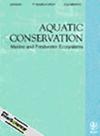A Simple and Effective Method for the Cryopreservation of Quillwort Spores
Abstract
Quillworts are highly threatened worldwide and many Isoëtes species have been suffering population decreases. Isoëtes cangae is a lycophyte endemic from a single Amazon lake that has been challenging due to climate change and deforestation of the Amazon rainforest. The development of strategies for ex situ conservation of lycophyte germplasm is urgent to prevent biodiversity losses. Spores of I. cangae were obtained from specimens collected in situ. Samples were submitted to three different moisture conditions: hydrated, air-dry desiccation and drying in silica gel. Desiccated samples were stored in an ultrafreezer (−80°C) or liquid nitrogen (−196°C) and the hydrated spores at room temperature. The spore viability was evaluated through spore germination (G) and sporeling emergence (SE) indices after 30, 90, 180 and 275 days of storage. The growth of emerged sporophytes was evaluated after 3 months. Desiccated–cryopreserved spores had high G% and SE%, even after 275 days of storage, and did not differ from hydrated spores. Hydrated spores had higher daily emergence and a longer time to maximum sporophyte emergence than desiccated spores, but not in all storage periods. Sporophytes that emerged from hydrated and desiccated spores had a similar development. Both desiccated methods and temperatures of storage maintained spore viability high. The methodologies tested in this study are novel for the genus and represent a significant step towards the ex situ conservation of quillworts.

 求助内容:
求助内容: 应助结果提醒方式:
应助结果提醒方式:


